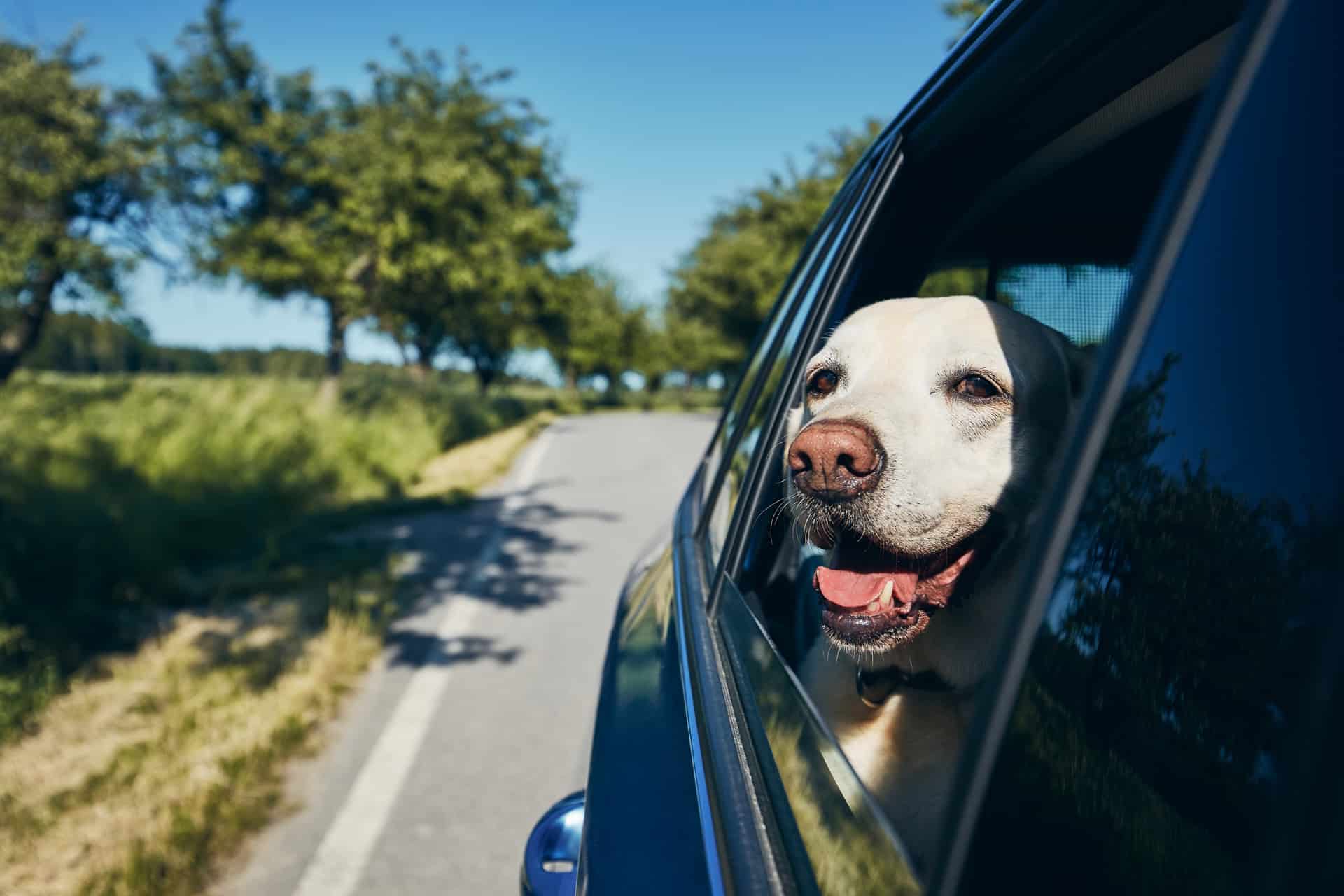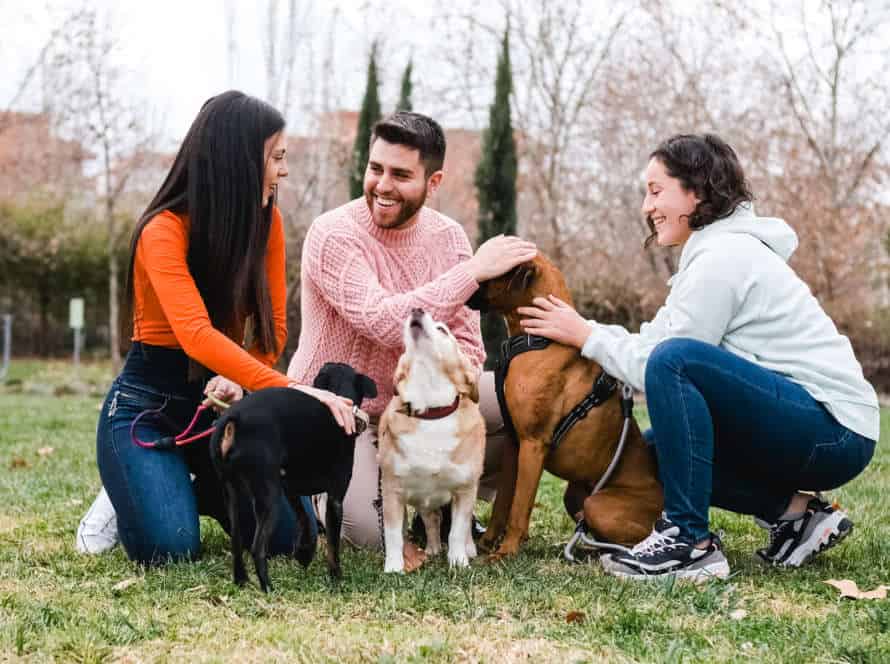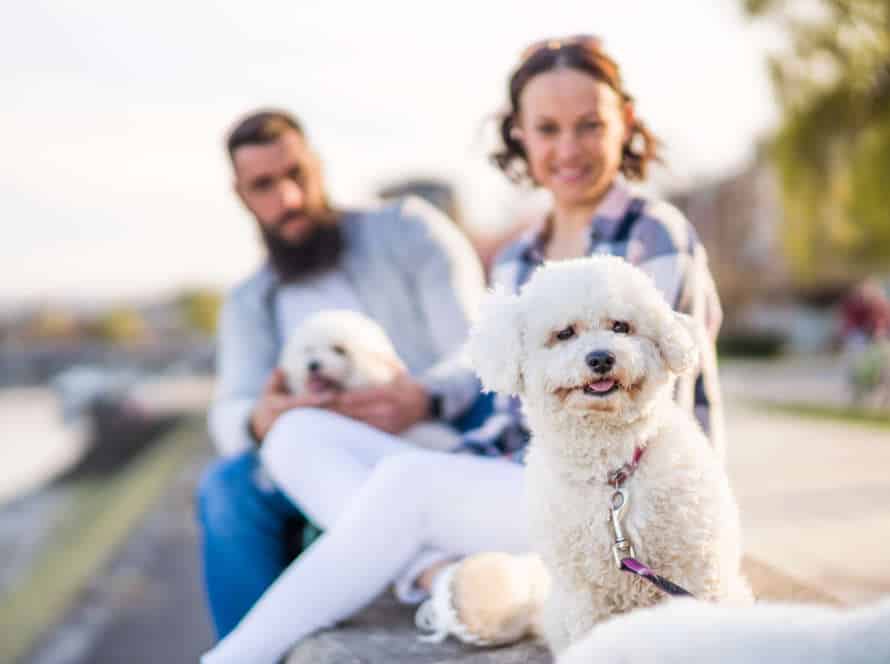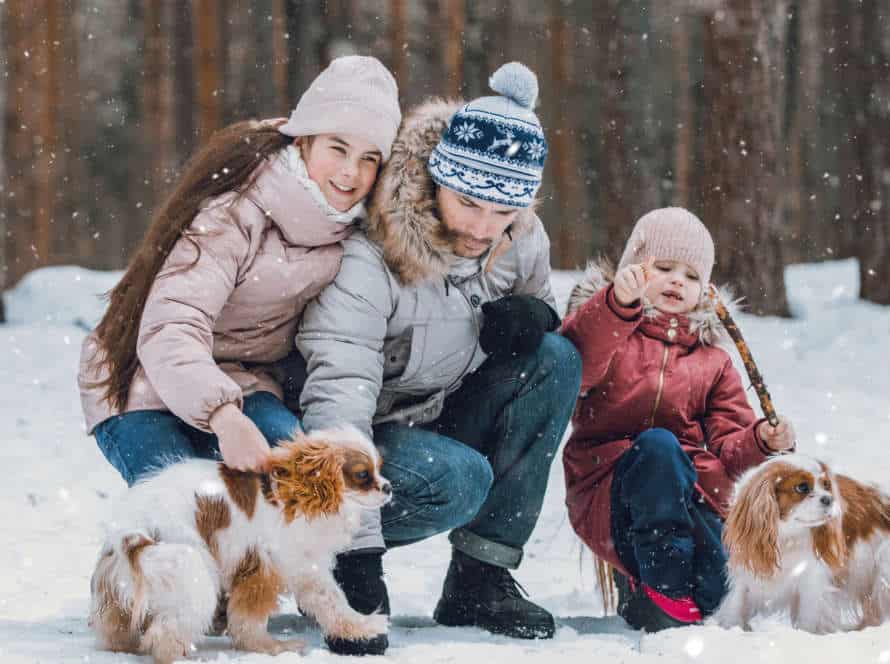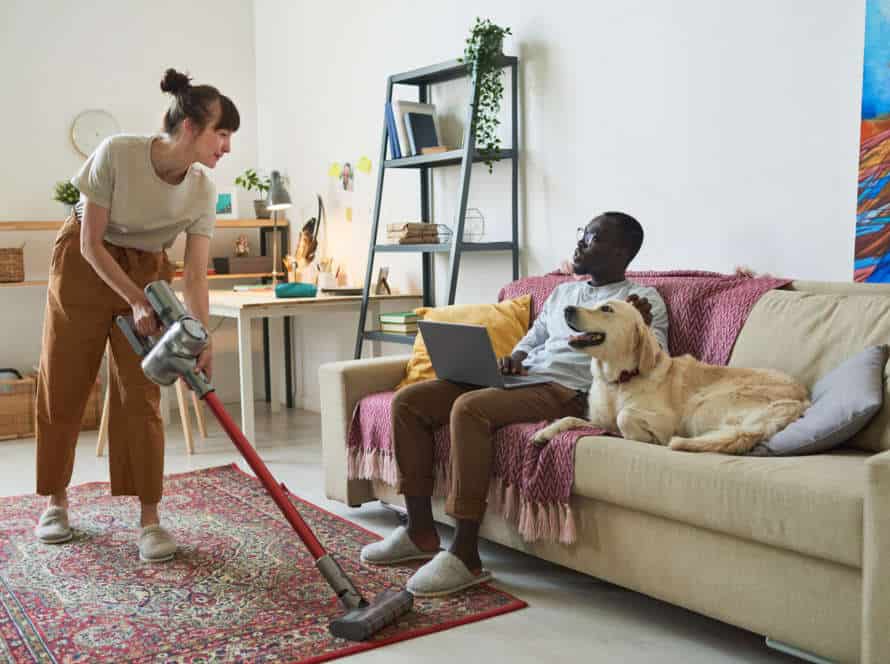How to Prepare Your Dog for Travel
To ready your furry companion for travel requires more than just bringing their beloved toys and treats. Here are some top tips to keep your pup safe and cozy during the journey.
- Schedule an Exam: Visit your vet around two weeks before the excursion for a complete exam, vaccinations, and health certificates needed at the destination.
- Train Your Dog for Travel: Let your pooch become familiar with the cage or carrier a few weeks before the trip so they are at ease with the space.
- Pack the Essentials: Have your dog’s food, a foldable water bowl, a leash, waste bags, medication, and a first aid kit ready.
- Think About the Mode of Transportation: Whether it’s in a car, train, or plane, research, and understand the regulations, rules, and pet-friendly policies of the service provider.
- Calm Your Dog: Use calming aids such as pheromone sprays, medication, or anxiety vests to lessen their travel-induced worry and guarantee a tranquil and pleasant journey.
Outline-
Prep your pup for a trip! Here’s what to do:
- Vet visit: Make sure vaccinations are up-to-date and get a health certificate.
- Update IDs: Put a collar w/ tags and microchip on pup.
- Training time: Take short drives & reward pup for good behavior.
- Essentials: Pack toys, food, water, meds, & a cozy blanket or bed.
- Secure transport: Use a crate, carrier, or harness for safety.
These steps will help you & your furry friend have a stress-free journey!
Planning for Travel
Trip-time with your pup? Fabulous! To make sure it’s a stress-free and safe journey, here’s a checklist of must-dos. Plan ahead to ensure Fido’s comfort. Get ready for a smooth ride! Pre-trip steps include:
- Researching pet-friendly hotels.
- Packing the right supplies.
- Visiting the vet.
- Preparing an emergency kit.
- Making sure you have the necessary paperwork.
- Familiarizing your pup with the car.
- Packing plenty of treats!
Preparing your dog for a trip – age, health, personality
Planning your pup’s trip? Consider their age, health, and personality.
Age: Puppies and seniors need extra attention. Breaks might be more frequent for pups, while seniors may need medication or special accommodation.
Health: Make sure their vaccinations are up-to-date and they’re healthy before going. Dogs with pre-existing conditions may need extra care and meds.
Personality: Anxious or fearful dogs may find travel tough. Introduce them to travel early, and use calming methods like music and vests.
Finally, make sure they have a comfortable and safe ride, with proper ventilation, seat belts, or crates.
Collecting important documents – vaccination records, health certificates, identification tags
If you’re going on a trip with your furry companion, it’s essential to get and sort all the documents required for the journey. These include:
- Vaccination records – make sure your dog’s shots, such as rabies, Lyme disease, and kennel cough, are up to date. Put a copy of them in your dog’s bag, and take photos of them too.
- Health certificates – this may depend on your destination. A health cert from your vet will show your dog is healthy and free of contagious diseases. Valid for 30 days.
- Identification tags – your pup should wear an ID tag at all times, even when travelling. Info should include pup’s name, your name, and current contact details.
- Pro tip: Microchipping your dog is strongly suggested. Provides extra protection if pup gets lost while travelling.
Researching the destination – dog-friendly hotels, activities, and restaurants
Research is vital for prepping your pup for travel. It assists in discovering pet-friendly lodgings, activities, and eateries to enjoy together. Here are some tips for exploring a pup-friendly destination:
- Look for hotels that accept pets. Check if they have beds, bowls, and treats.
- Check for activities that let dogs in. Parks, trails, and beaches are great options.
- Find eateries with outdoor seating or pet-friendly patios.
- Check local laws and regulations. Leash laws, vaccination needs, and pet waste disposal rules.
By researching and planning, you and your pup can have a stress-free, enjoyable journey.
Packing for Travel
Heading out with your pup? Preparing is a must! Pack food, water, treats, and toys. Blankets, a first-aid kit? Don’t forget those! Car safety measures? Make sure to think! Let’s take a peek at what needs to be packed in the list.
- Food
- Water
- Treats
- Toys
- Blankets
- A first-aid kit
- Car safety measures
Essential items to pack for your dog – food and water, medication, bowls, leash, bedding, and toys
When travelling with your pup, make sure you don’t forget these essentials:
- Food and water: Pack enough food and fresh water to keep your canine friend nourished during the journey. Store dry and wet food in airtight containers. Have enough water to keep your pup hydrated.
- Medications: If your pooch needs to take medications regularly or needs any first aid items, remember to pack them in a separate bag. Put medications and first aid supplies in a waterproof container.
- Bowls: Have collapsible or lightweight bowls for food and water on-the-go. You can also carry a portable water bottle with an attached bowl for convenience.
- Leash: Don’t forget to bring a leash, even if your pup usually is off-leash. Have a comfortable, sturdy leash to keep your pooch safe and under your control in unfamiliar places.
- Bedding: Pack a small bed or blanket for your pup to rest in during the trip. The familiar scent of the bedding will make your dog feel more secure.
- Toys: Take a few of your dog’s favorite toys to help them cope with stress and boredom during long hours of travel. Toys can also make your pooch feel relaxed in strange places. Pro tip: Pack your pup’s bag a few days before the trip to make sure you have all you need and avoid last-minute stress.
Selecting the right carrier or crate for your dog – size, ventilation, and safety features
When you and your furry friend travel, it’s important to pick the right crate or carrier. So, consider these factors: size, ventilation, and safety features.
- Size: Measure your pup’s height, length, and weight. Make sure they can stand and turn comfortably inside.
- Ventilation: Get a crate/carrier with good airflow, especially if you’ll be flying.
- Safety Features: Get a sturdy one with locks/latches and accident-resistant features.
Pro tip: Let your dog explore the carrier before the trip. This will help reduce stress.
Tips for packing efficiently – maximizing space and minimizing clutter
Packing efficiently is key when traveling with your pup. Here are some tips to help you get the most out of your packing space and keep it neat:
- Make a list: Before you start packing, jot down all the must-haves for your dog during the trip. This will help you stay organized and not forget anything important.
- Get a travel crate: If you’re using a car or plane, a travel crate is a great way to keep your pup secure. Look for one that’s light, portable and airy.
- Pack multipurpose items: Save room by packing items that can serve more than one purpose. Blankets can be beds, towels, or even covers for furniture or car seats.
- Use packing cubes: Use packing cubes to keep your luggage tidy and make it easier to find what you need. Have one cube for food/treats, another for toys, and a third for grooming supplies.
Follow these tips and you’ll be able to pack efficiently and make the travel experience stress-free for you and your furry friend!
Practicing for Travel
Preparing your pooch for travelling can be daunting. To make it simpler, begin with short journeys. Taking your pup for little auto rides can help them get used to being in the car. As your doggy becomes more comfortable, you can slowly up their car ride time and distance. We’ll discuss all aspects of practising for a trip with your pup here.
Training your dog to acclimate to the carrier or crate – gradually increasing time spent inside and positive reinforcement
Training your pup to get used to a carrier or crate is a must for travel prep. Using positive reinforcement and increasing the time your dog spends inside the crate can make it easier for both you and your doggo. Try these tips:
- Let your pup explore the crate or carrier on their own terms.
- Place treats, toys, and a comfy blanket or bed inside to invite your pup.
- After they’re comfortable, start closing the door while you’re at home. Increase the time spent inside gradually.
- Give rewards like treats, praise, and toys when your pup enters and stays in the crate or carrier.
- Never force your pup inside or use the crate/carrier for punishment.
With patience and consistency, your pup will feel more relaxed in the crate or carrier, making travel smoother. Pro tip: Practice taking short car rides with your pup in the crate or carrier. They’ll get used to the motion and sounds of travel.
Taking short trips with your dog to prepare for longer journeys – car rides or plane trips
Short trips with your pup are a great way to get them ready for longer journeys. Whether you’re driving or flying, here are some tips to make the experience more enjoyable:
- Start with a few car rides or walks around the block, then gradually increase the length.
- Secure your dog in a crate, carrier, or harness for car rides.
- Let them get used to the carrier or crate before the trip.
- Pack food, water, toys, and a leash for your pup.
- Research pet-friendly accommodations and airline policies before booking.
By doing short trips, your dog will become familiar with travelling and it’ll be less stressful for both of you.
Practicing good behavior and obedience – rewarding good behavior and addressing any potential behavioral problems
Good behavior and obedience are important for a safe, stress-free journey with your four-legged friend. Encourage good behavior and address any potential problems for an easier trip for you and your pup.
Here are some tips for getting ready:
- Teach basic commands, like “sit,” “stay,” “come,” and “down.”
- Use treats, praise, toys to reward good behavior and reinforce commands.
- If your dog isn’t used to it, practice crate training a few weeks before travelling.
- Let your dog sniff and explore the travel carrier to get used to it.
- Talk to your vet if your dog gets anxious or motion sick while travelling. They can suggest medication or calming aids.
By doing these things, you can help your pup feel at ease during their journey.
During Travel
Travelling with your pet? Great! But, it can also be challenging. To make sure your dog is safe and comfortable, take these essential steps:
- Prepare properly. Especially if it’s their first time.
All taken care of? Then enjoy the journey!
Ensuring your dog is comfortable and safe during transit – monitoring food and water intake, bathroom breaks, and providing comfort items like blankets or toys
Ensuring your dog’s comfort and safety is key for any pet owner. Here are some tips:
- Monitor food and water intake. Before travel, limit intake. During transit, offer small amounts of food and water to avoid motion sickness and dehydration.
- Schedule regular bathroom breaks. Every few hours, let your dog relieve themselves, stretch and get fresh air.
- Provide comfort items. Bring your dog’s favorite blanket, toy or chew to keep them calm. Make sure they are secured in a well-ventilated carrier or seat belt.
Being prepared makes a big difference for you and your furry friend during travel.
Communicating with airline or hotel staff to ensure smooth transitions – following safety guidelines and ensuring your dog’s needs are met
Before you travel with your pup, it’s essential to effectively communicate with airline/hotel staff. This includes following safety rules & meeting your dog’s needs. Here are some tips:
- Notify airline/hotel before arrival.
- Confirm they allow pets & what policies they have.
- Ask about fees, restrictions & requirements.
- Provide size, weight, breed & any special needs/accommodations.
- Bring necessary paperwork (vaccination records, health certificates & meds).
By communicating effectively, you can help make the trip safe & comfy for both you & your pup.
Addressing any issues or concerns that arise during travel – handling changes in routine or environment, and potential health concerns
Traveling with your furry friend can be tough. But, if you take precautions, any issues can be tackled. Here are tips to get ready for the trip:
- Introduce pooch to its carrier or travel items before the journey.
- Give your pup a few short car rides prior to the longer one.
- Ensure the carrier or car space is comfortable and airy.
- Pack sufficient food, water, meds, and familiar toys and bedding.
- Keep your dog’s travel documents, vaccination records, and medical info accessible.
- Make a list of local vets and pet hospitals at your destination, if any health concerns or emergencies arise.
After Travel
Once you are back from your journey with your pup, let them settle into their routine. Have treats ready – this is perfect to reward your pup for their good behaviour while on the road or travelling. Spend quality time with your dog; they love it and will benefit greatly. Also, inspect your pet for any bumps or bruises they may have gotten on the way.
Helping your dog acclimate to the new environment – gradual adjustment to new surroundings and routines
To help your pup acclimate to a new environment after travel, do it gradually. This can reduce stress and make the transition easier. Here’s how:
- Start with one room at a time.
- Keep their food, water, bedding, and toys in the same place as before.
- Follow their usual routine as much as possible. Feeding times, potty breaks, and exercise.
- Gradually introduce them to new people and animals. Avoid overwhelming them.
- Provide lots of love, attention, and reassurance. Help them feel safe.
Keep in mind that it may take time for your dog to adjust. Be patient and understanding.
Maintaining good hygiene and health practices – proper grooming, maintaining medical records and medication schedules
It’s vital to keep good hygiene and health habits for your beloved fur buddy, especially after a trip. Regular grooming, monitoring health records, and adhering to medicine schedules will make sure your pup stays hale and hearty while traveling. Here are some tips:
- Groom them regularly to prevent matted fur, shedding, and flea/tick infestations.
- Keep medical documents, including vaccinations, medication history, and allergies/medical issues.
- Stick to a medication plan to avoid fleas, ticks, worms, and such.
- Inspect their ears, teeth, and paws for any infections, inflammation, or injuries.
- If you spot any worrying signs, like lethargy, vomiting, diarrhea, or lack of appetite, contact your vet.
By following these hygiene and healthcare routines, your furry friend can stay healthy and happy, even after a journey!
Enjoying your travels with your furry companion – exploring and creating new memories together
Before going on a trip with your furry pal, there are a few things you can do to get them ready and make sure you both have fun.
Here are some tips:
- Visit the Vet. Go to the vet to make sure they are healthy and up-to-date on shots.
- Pack Essentials. Bring food, water, bowls, leash, meds, and vaccination records.
- Practice Car Rides. Take your pup on small rides, then gradually make them longer.
- Research Your Destination. Make sure your destination is pet-friendly. Research pet policies of hotels, restaurants, and attractions.
Travelling with your furry friend can be great, but it’s important to prepare beforehand for a safe and enjoyable experience.
Frequently Asked Questions
Q: How can I prepare my dog for travel?
A: Start by taking your dog on short trips to get them used to being in a car. Gradually increase the distance and duration of the trip so they can get comfortable with the experience. Also, make sure to pack all necessary items such as food, water, toys, and any medications.
Q: What documents do I need when traveling with my dog?
A: You will need to have a proof of vaccination and health certificate for your dog. You may also need other documents depending on your destination and mode of transportation.
Q: Can I give my dog medication to calm them during travel?
A: It is typically not recommended to give your dog medication unless prescribed by a veterinarian. However, there are natural remedies such as calming vests or essential oils that can help soothe your dog during travel.
Q: Can I bring my dog on a plane?
A: Yes, most airlines allow dogs to travel in the cabin or cargo hold. However, there are restrictions and fees associated with it. Make sure to check with the airline beforehand to ensure you have all the necessary information and paperwork.
Q: How can I keep my dog safe during travel?
A: Always make sure your dog is secured with a seatbelt or in a crate. Never let your dog ride with their head out of the window or in the back of a pickup truck. Additionally, make sure your dog has proper identification and a microchip in case they get lost during travel.

